This weekend’s highly anticipated pre-orders will bring even more lavish colour and variety, in the form of two plastic boxed sets, to both Napoleonic British & French armies on the Epic Waterloo Campaign. Pre-orders begin Friday 21/01/2021!
British Highlanders & Riflemen
Wellington’s Allied army was a colourful mix of nationalities and troop types. None were more exotic-looking than the three regiments of Highlanders at the Battle of Waterloo.
The first Highland regiment was raised in 1739 to monitor and patrol the highlands for ‘ne’er-do-wells’, and it was later taken into the line as the 42nd Royal Highland regiment, ‘the Black Watch’. Although The Seven Years War saw the raising of several more Highlander regiments, they were disbanded after the war. The American Revolution saw further units raised, two of which were retained following the war’s end. The outbreak of the war with France in 1793 saw a real increase in Highland recruitment. Highland regiments or ‘Redshanks’ that fought during the Hundred Days were the 42nd Royal Highland Regiment, 73rd Highland, 79th Cameron Highlanders and 92nd Gordon Highlanders. Armed and equipped as the Foot battalions, the Highlanders were “damn forward fellows with the bayonet,” being renowned for their ferocious charge and mêlée capabilities.
The jacket worn by the Highland regiments was, to all intents and purposes, the same as that worn by the Guard and Line infantry, as was the equipment that they carried on campaign. Men in the Highland regiments wore kilts and hose instead of trousers. A ‘mounted’ bonnet replaced the shako; this was made of a cloth-covered wire frame surrounded by a turban diced in red, white and green, the whole being covered in ostrich feathers. On the left side was a regimental rosette that held a plume in the same colours as the rest of the infantry, apart from the Black Watch who wore the ‘red hackle’ in all companies to honour the regiment’s gallantry at the Battle of Geldermalsen in 1795. In 1809 most Highland regiments replaced their kilts with trousers to assist in recruiting from Lowlanders. Highland battalions carried two battle flags, one being the Regimental Colour and the other being the King’s Colour.
With the contents of this plastic boxed set you can field all three of the Highland units – the 42nd ‘Black Watch’, the 79th Cameron Highlanders and the 92nd Gordon Highlanders. The Highland units had won a reputation for tough fighting in the Peninsular campaign and fought well at Quatre Bras and Waterloo on the following day. They are each commanded by a smartly dressed brigade commander on horseback.
Skirmishing 95th & Royal Artillery
This new plastic kit also includes 24 skirmishing (and much-asked for!) 95th Rifles and a 3-gun Royal Artillery 5.5-inch howitzer battery. No British army is complete without the splendid Rifle Brigade! Three battalions of the 95th fought at Waterloo in their trademark dark green uniforms. Their efficiency with the Baker rifle was well known to the French, who really did not like to face them! The vast majority of the three units fought in line and square at Waterloo (available as part of The British Infantry, some famously deployed in skirmish order in the sandpit next to La Haye Sainte. These figures can also be painted to portray the brave German defenders of that vital farmhouse.
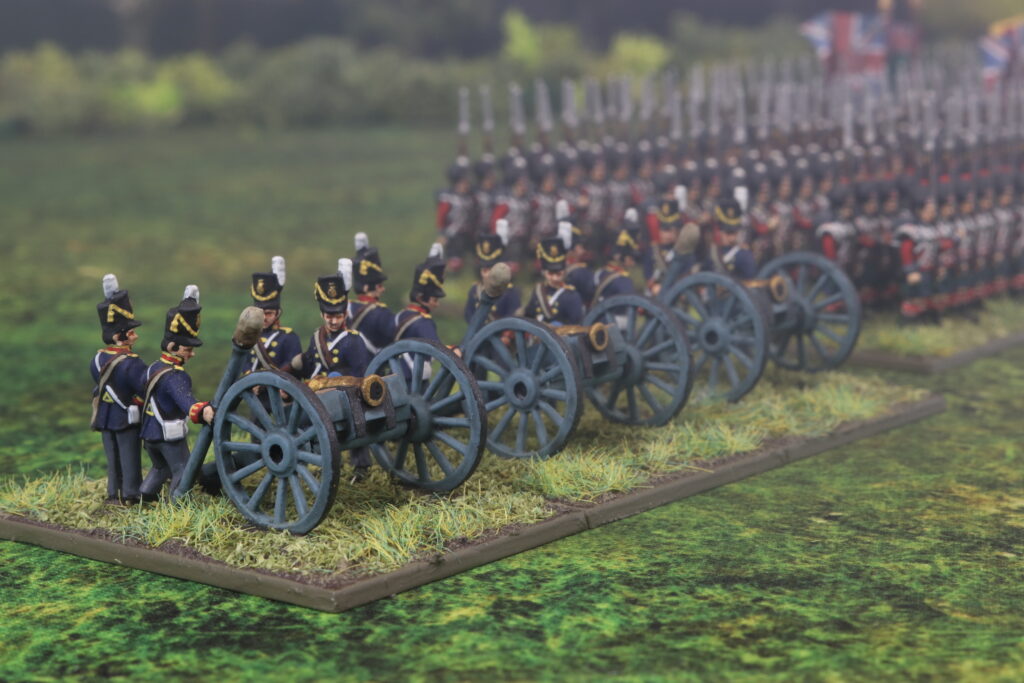
Box Set Full Contents:
- 3 x Highlander Regiments of 80 Men each
- 3 x Mounted Brigade Commanders
- 24 x Skirmishing 95th Rifles
- 3 x Royal Artillery 5.5” Howitzers
- 1 x Full-colour Napoleonic British flag leaflet.
French Middle & Old Guard
Napoleon created the Imperial Guard as an army within an army. To gain access to its hallowed ranks was the dream of many French soldiers. Better pay, food, uniforms and a swagger that carried them all over Europe – it was a post of great honour and they worshipped their Emperor. They were far from being palace guards however as long and active service made them crack soldiers who could be relied upon to get the job done.
The Old Guard
The ‘Ancients’, the bravest of the brave, the finest soldiers on any battlefield in the Napoleonic Wars. Seven of the eight battalions of the Old Guard graced the field at Waterloo.
The 1st and 2nd Regiments of Grenadiers and the 1st and 2nd Regiments of Chasseurs were entitled to bear the honoured title of Old Guard. Each regiment had two battalions, with each battalion having four companies of around 150 men, although some battalions were over strength.
Giants in bearskins, these men had fought in numerous campaigns and the vast majority had won France’s highest military honour for bravery: the legion d’honneur. At Waterloo the Old Guard Grenadiers were dressed in their blue greatcoat with red epaulettes and blue overall trouser. The bearskin was stripped of its finery but still retained its brass front plate. They were armed with a musket that had brass instead of steel fittings and sabre briquets.
The Old Guard Chassuers were dressed in a similar fashion although their bearskin did not have the brass front plate and their epaulettes had green shoulder straps and red fringes. With large moustaches and side whiskers, their hair in queues and a gold earring in each ear, they certainly looked the part of grizzled veterans.
The Middle Guard
The Middle Guard was formed from the 3rd and 4th regiments of Grenadiers and Chasseurs of the Guard, men second only to their brothers in the Old Guard. Out of the twenty three battalions of Guard Infantry that began the Hundred Days campaign, only seven of them were Middle Guard formations. The 3rd and 4th Grenadier regiments supplied a total of three battalions as the 4th Grenadiers were unable to form a second battalion before the campaign began, whilst the 3rd and 4th Chasseurs provided four battalions in total at the outbreak of hostilities. The 4th Chasseurs were mauled at the battle of ligny, their two under-strength battalions were then amalgamated in time for waterloo. All Guard battalions were made up of four companies, each of approximately 150 men.
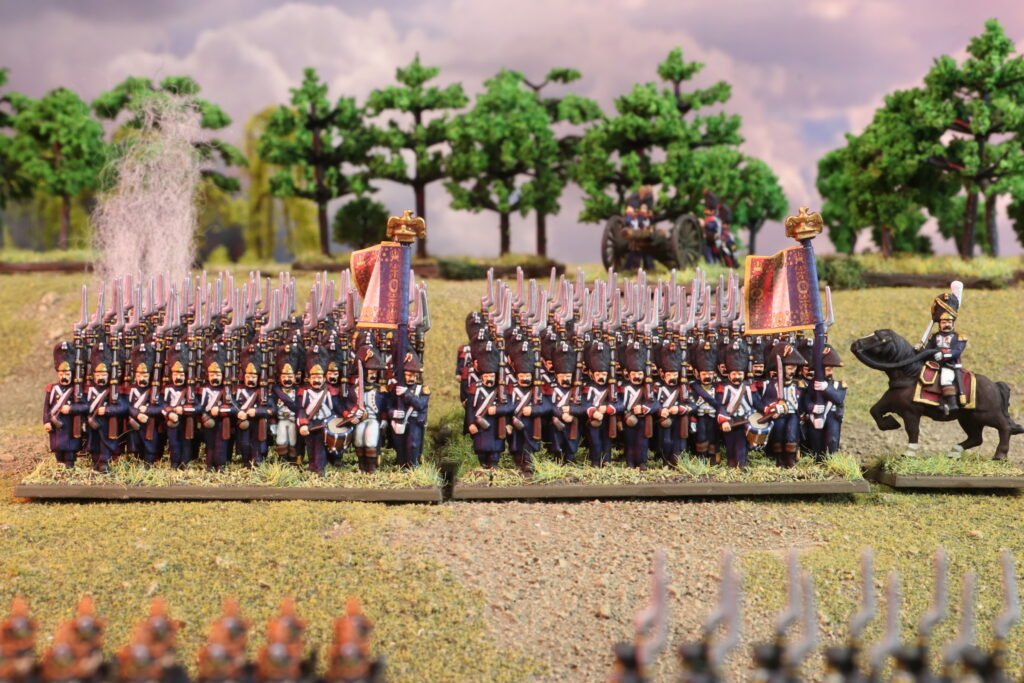
The dress of the Middle Guard did not live up to its ‘on paper’ billing during the hundred days as they had been hastily put into the field. The campaign uniform was much the same as the Old Guard. That said the Middle Guard were supposed to wear suitably ornate shakos but all regiments turned out in whatever was available, bearskins, shakos, bonnet de police (forage caps) and bicornes. To represent this, we have added a few extra heads; those who wish to further differentiate their units can replace some of them with the shako or the bonnet to convey the poorer supplied Middle Guard although it isn’t mandatory!
Marines of the Guard & ‘Lovely Daughters’
Also included are units of Marines of the Guard (30 soldiers). Les Marines de la Garde were originally raised as a five-company battalion in 1803. They had a long and glorious history, fighting in many campaigns including Spain and Russia. They were sailors, soldiers and engineers and acquitted themselves well in each trade. There were two companies of marines attached to the Imperial Guard HQ
Finally, Engineers of the Guard (30 soldiers) are also included to add a further dash of colour and variety to the French army. To cover the Guard in the attack Napoleon fielded ‘His lovely daughters’, large 12-pounder cannon, crewed by excellent gunners and which could reach out further than most Allied guns. A dangerous foe indeed…
Box Set full contents:
- 3 x Guard Battalions of 80 Men each – with optional head options to represent poorer uniformed Middle Guard
- 3 x Mounted Brigade Commanders
- Marines of the Guard (30 Men)
- Engineers of the Guard (30 Men)
- 3 x Foot Artillery 12-pdrs
- 1 x Full-colour Napoleonic French flag leaflet.
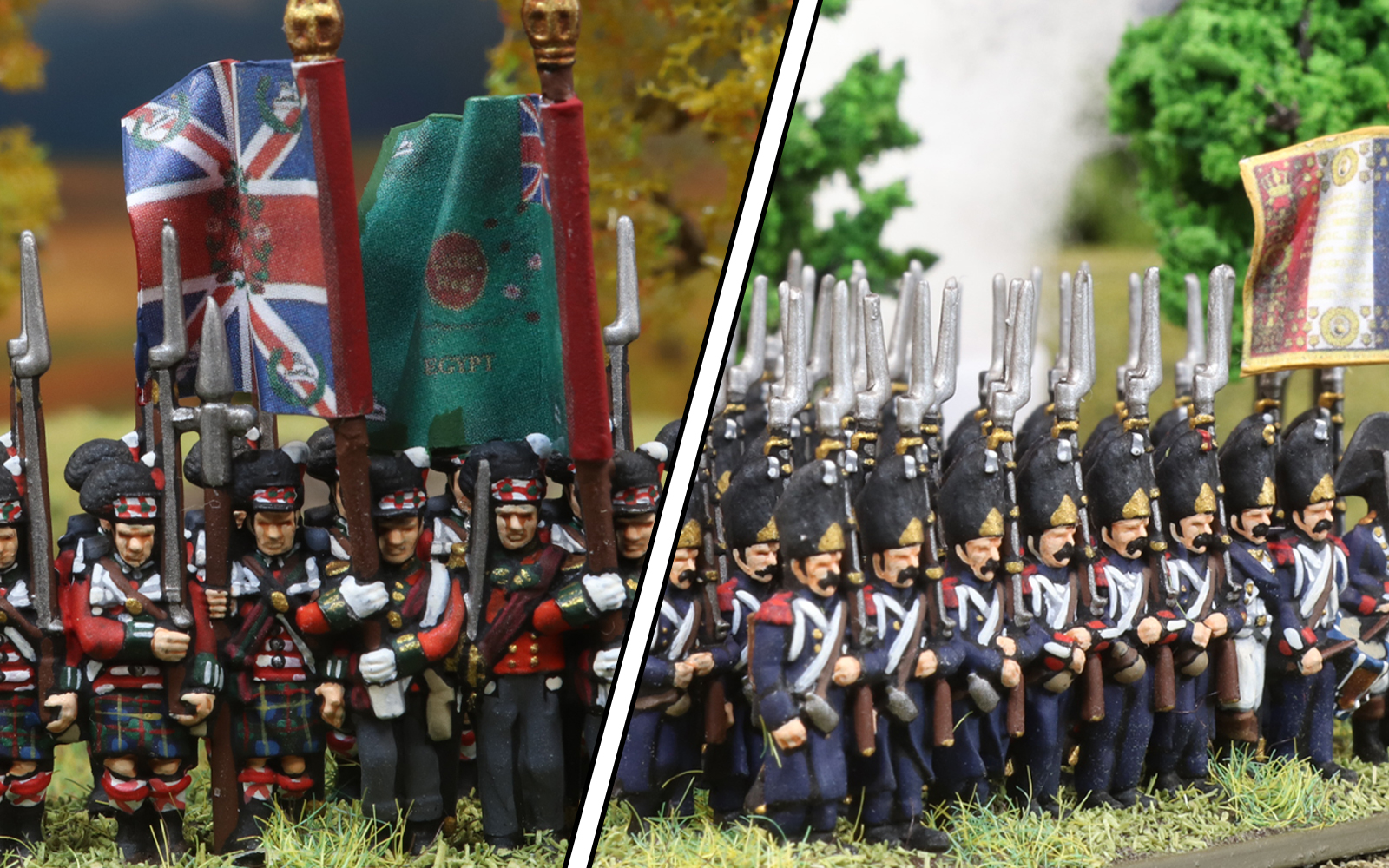
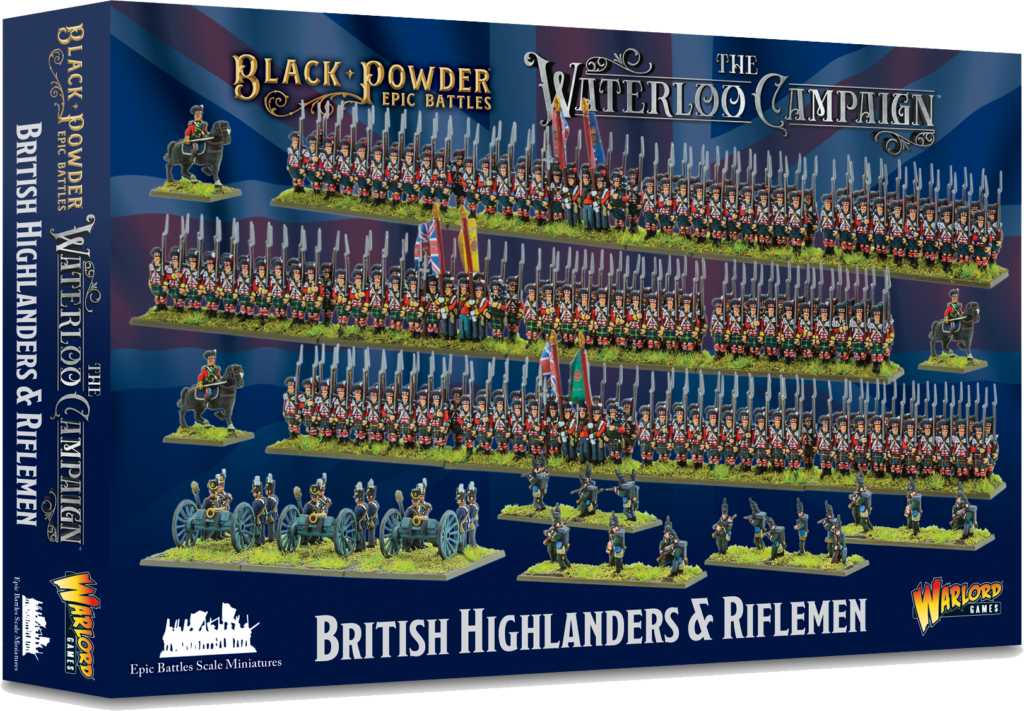
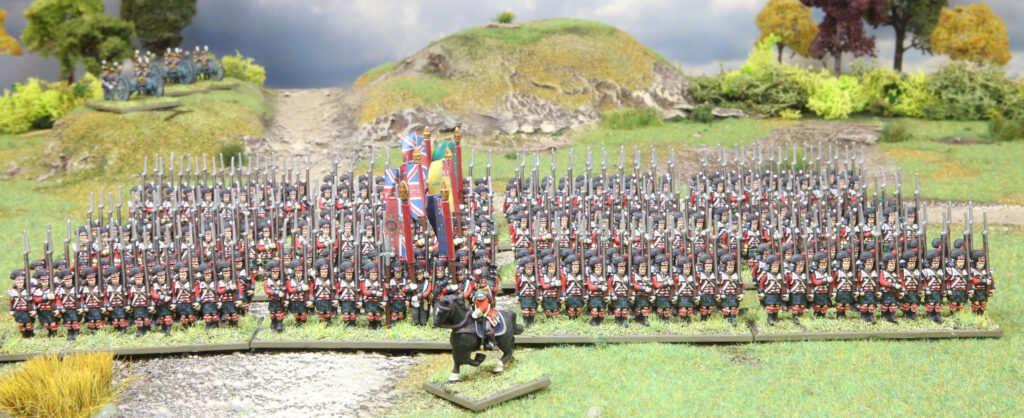
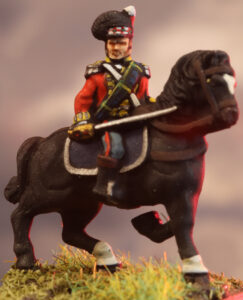
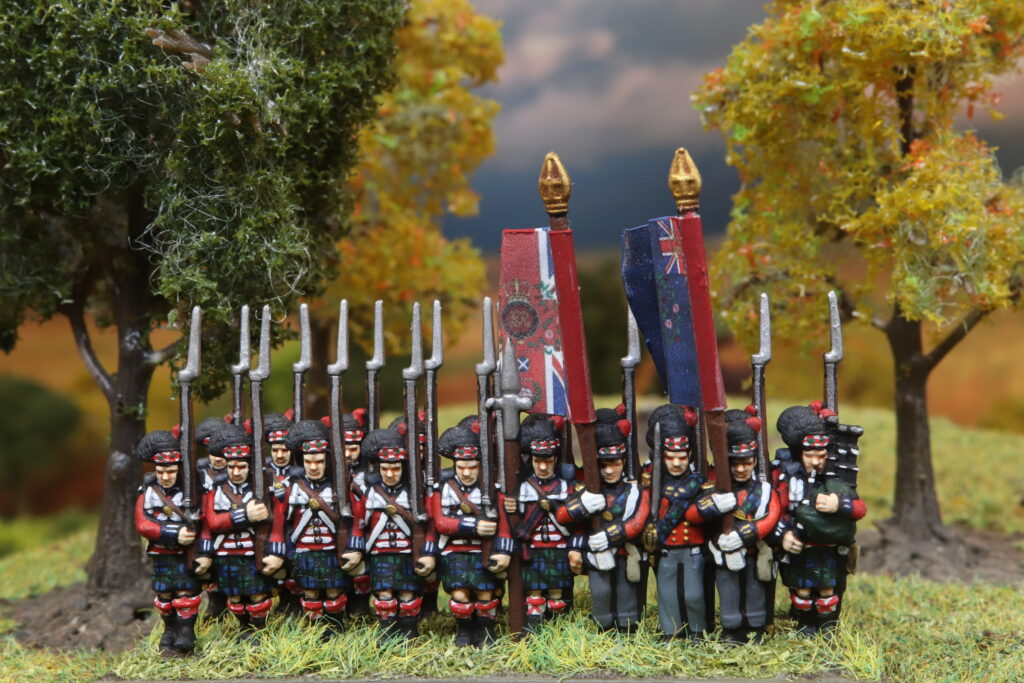
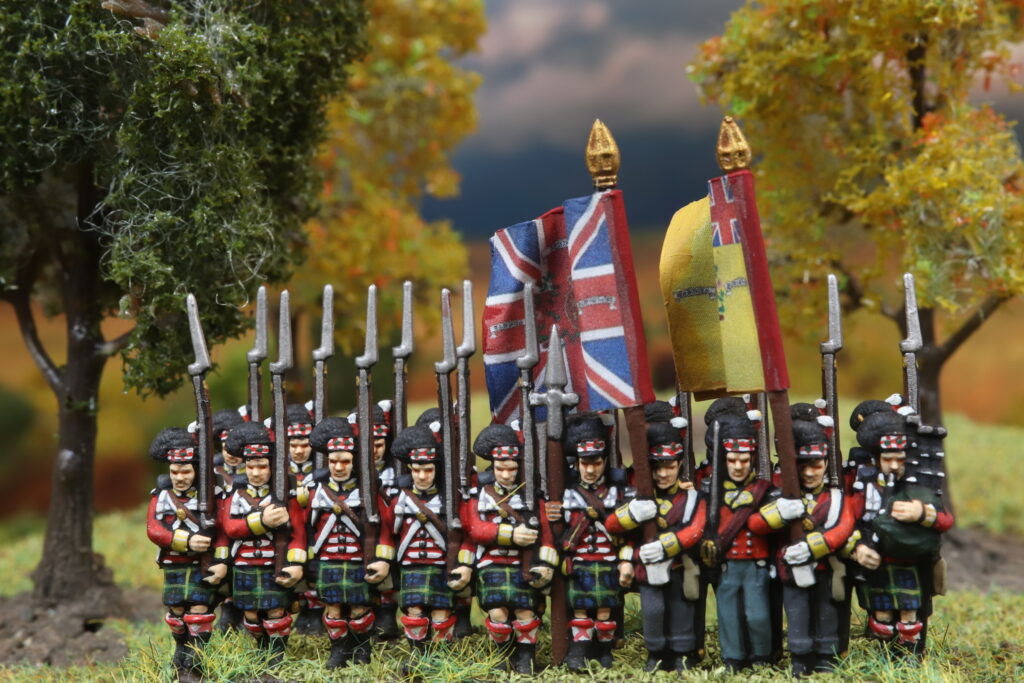
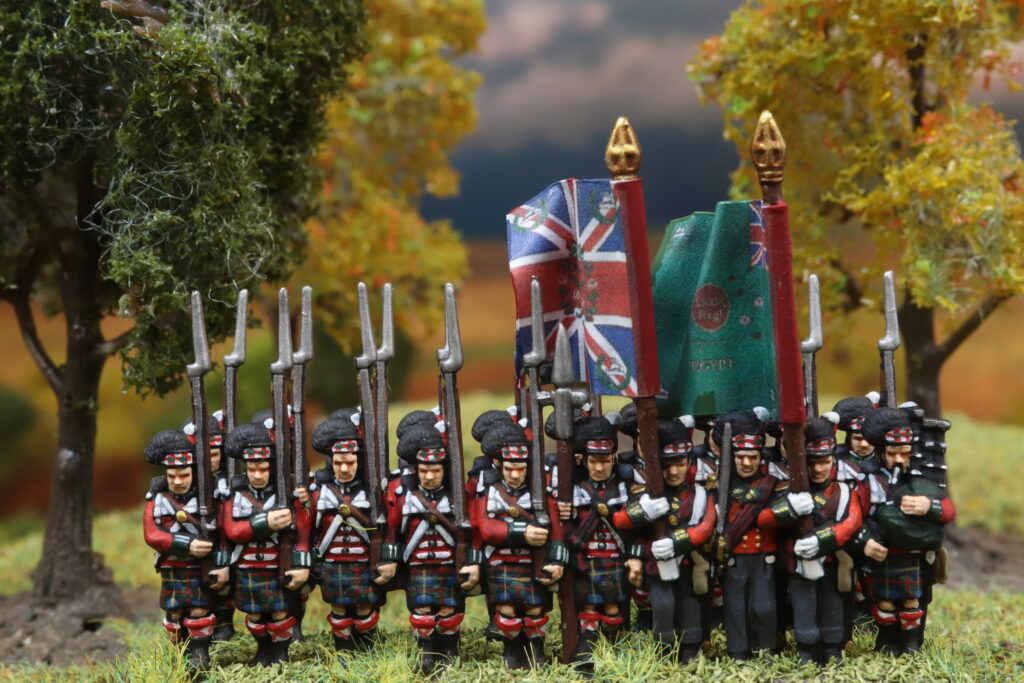
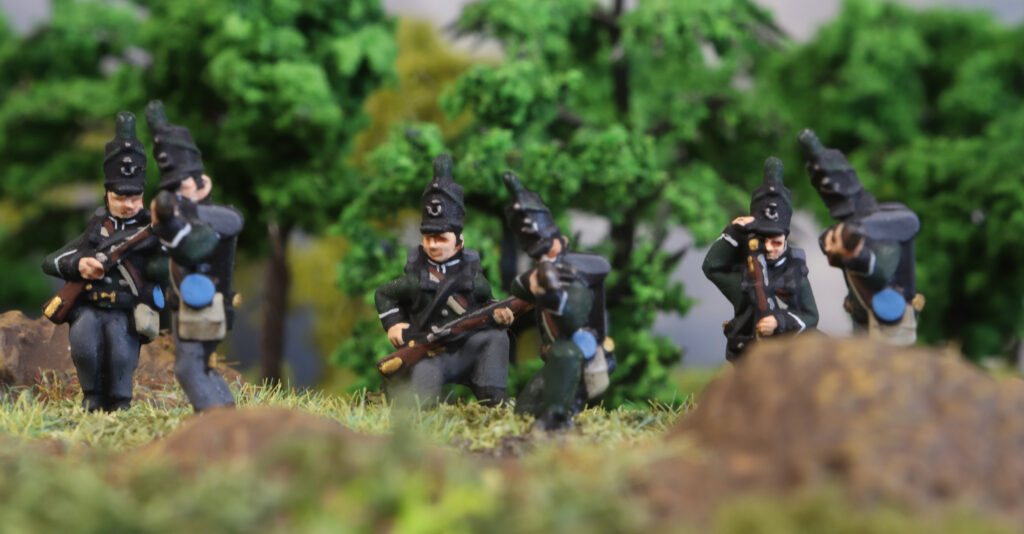
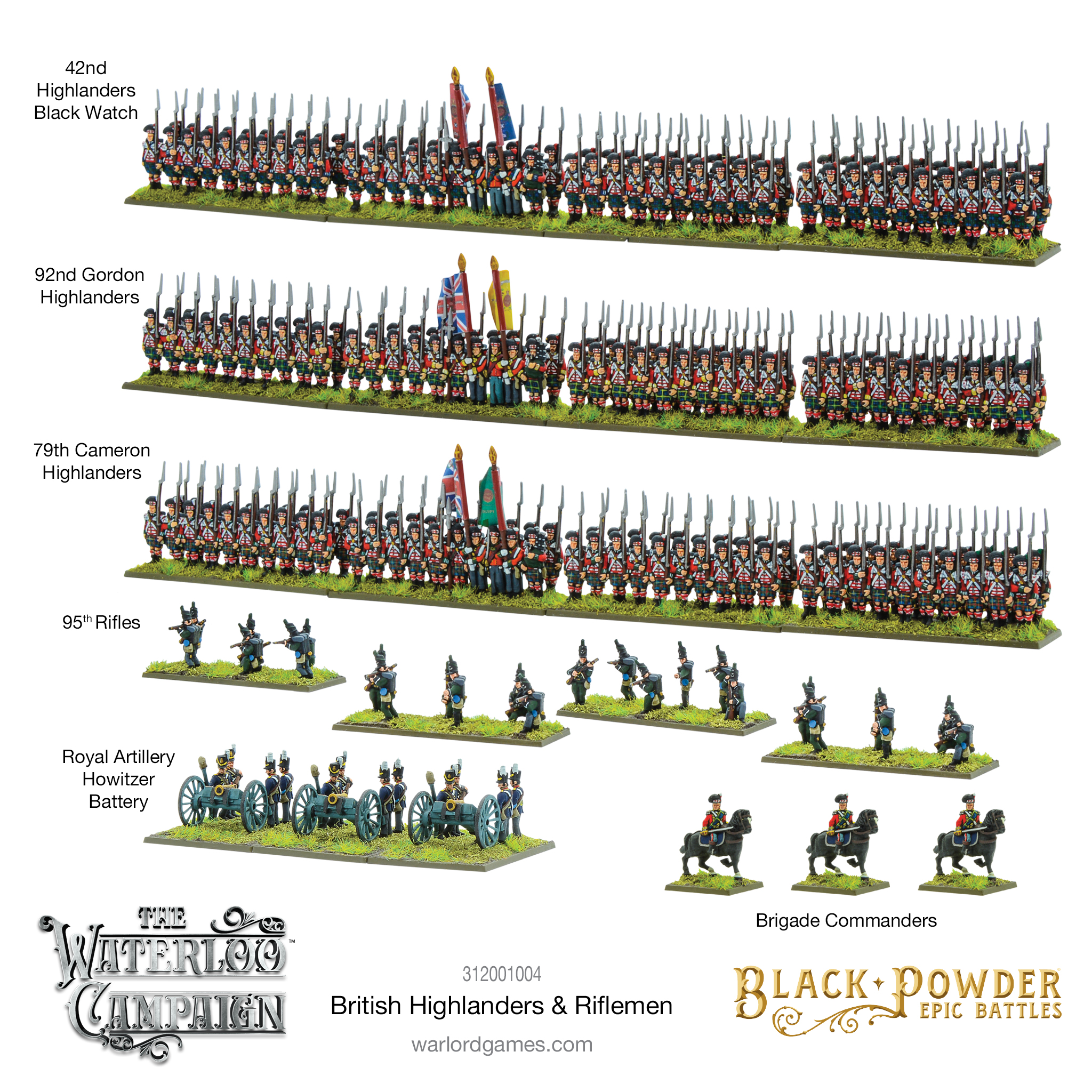
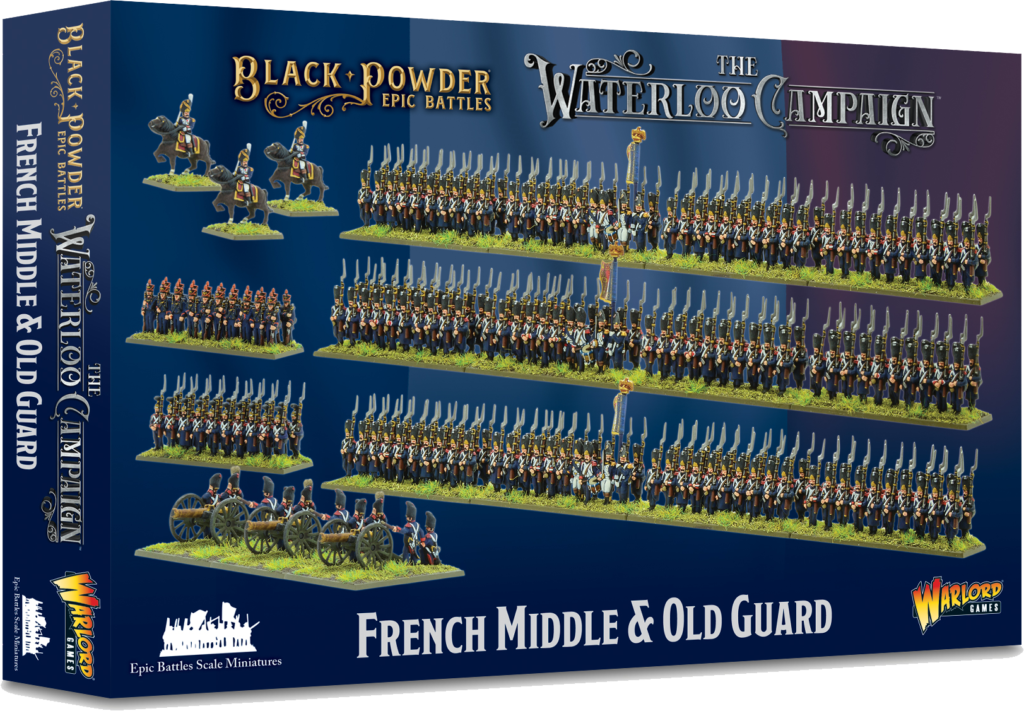
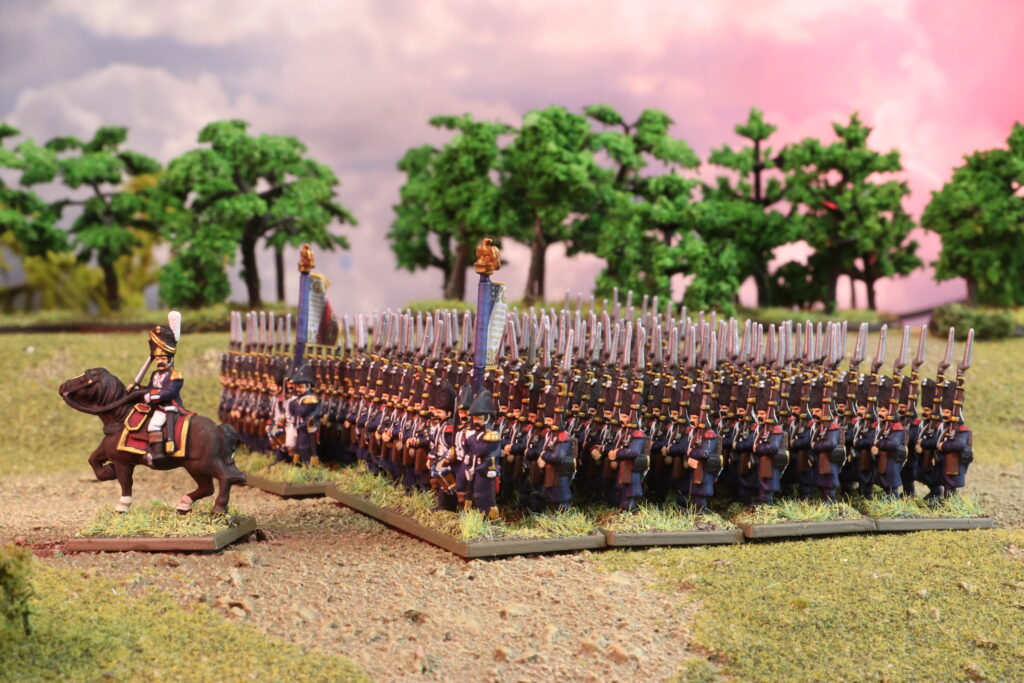
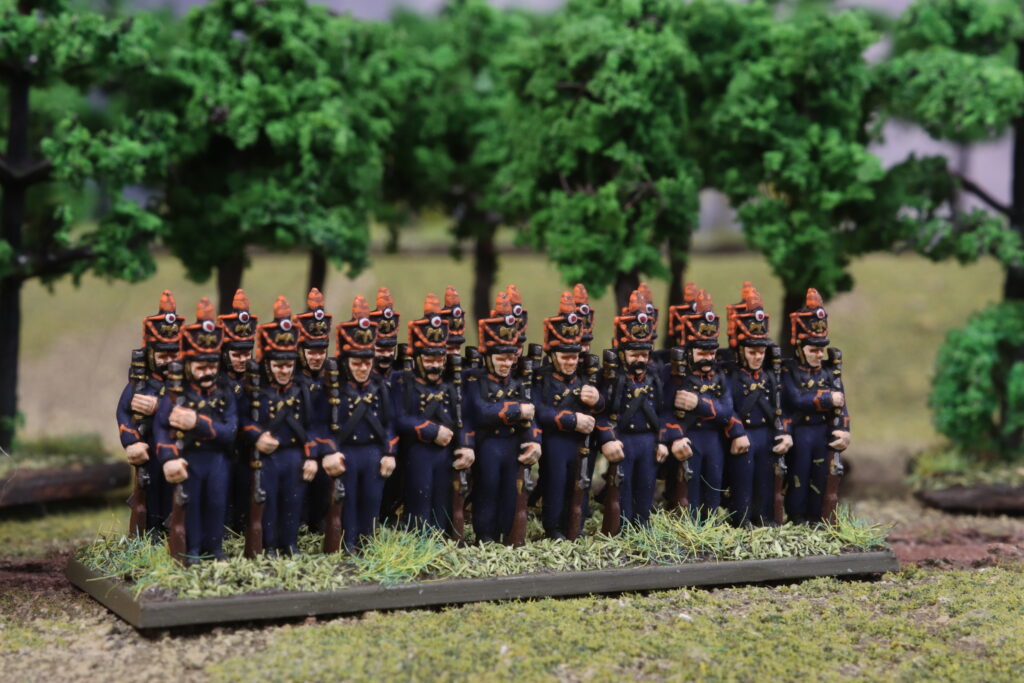
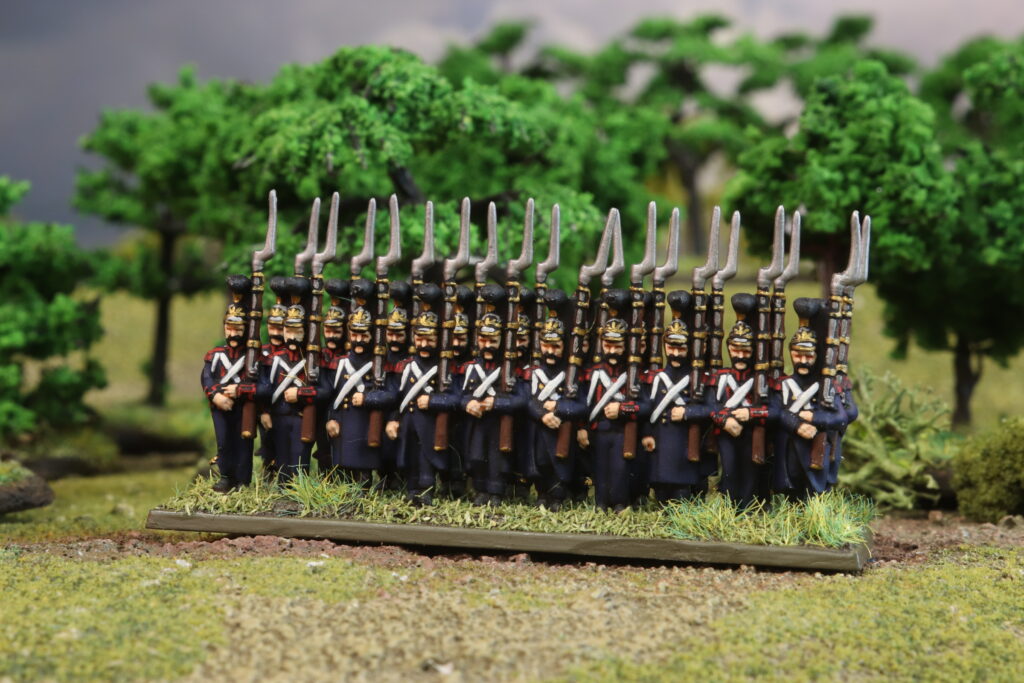
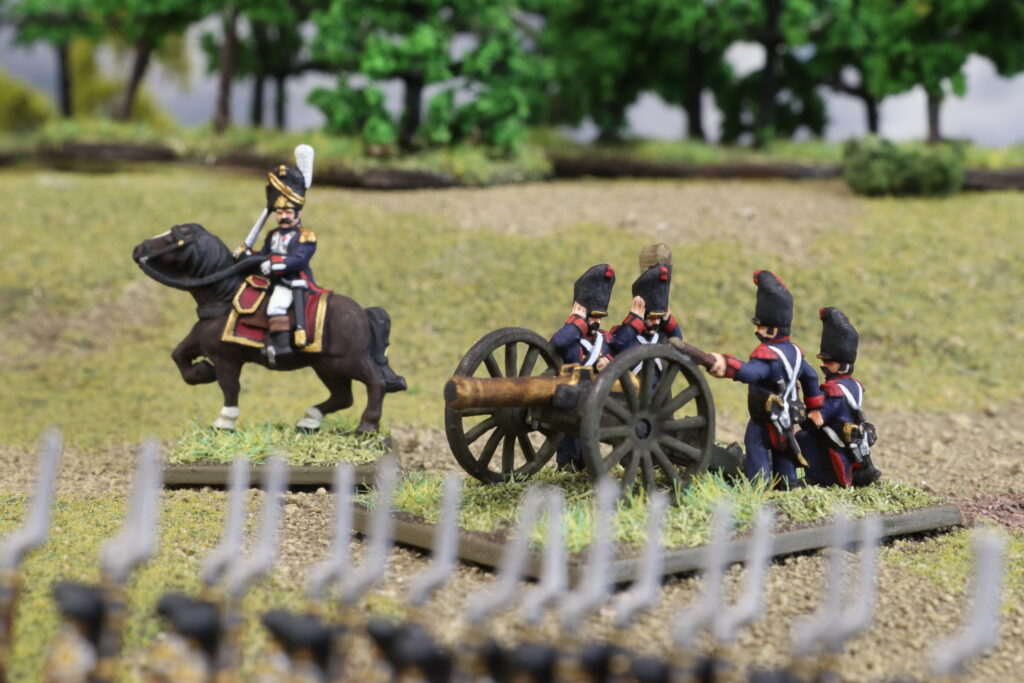
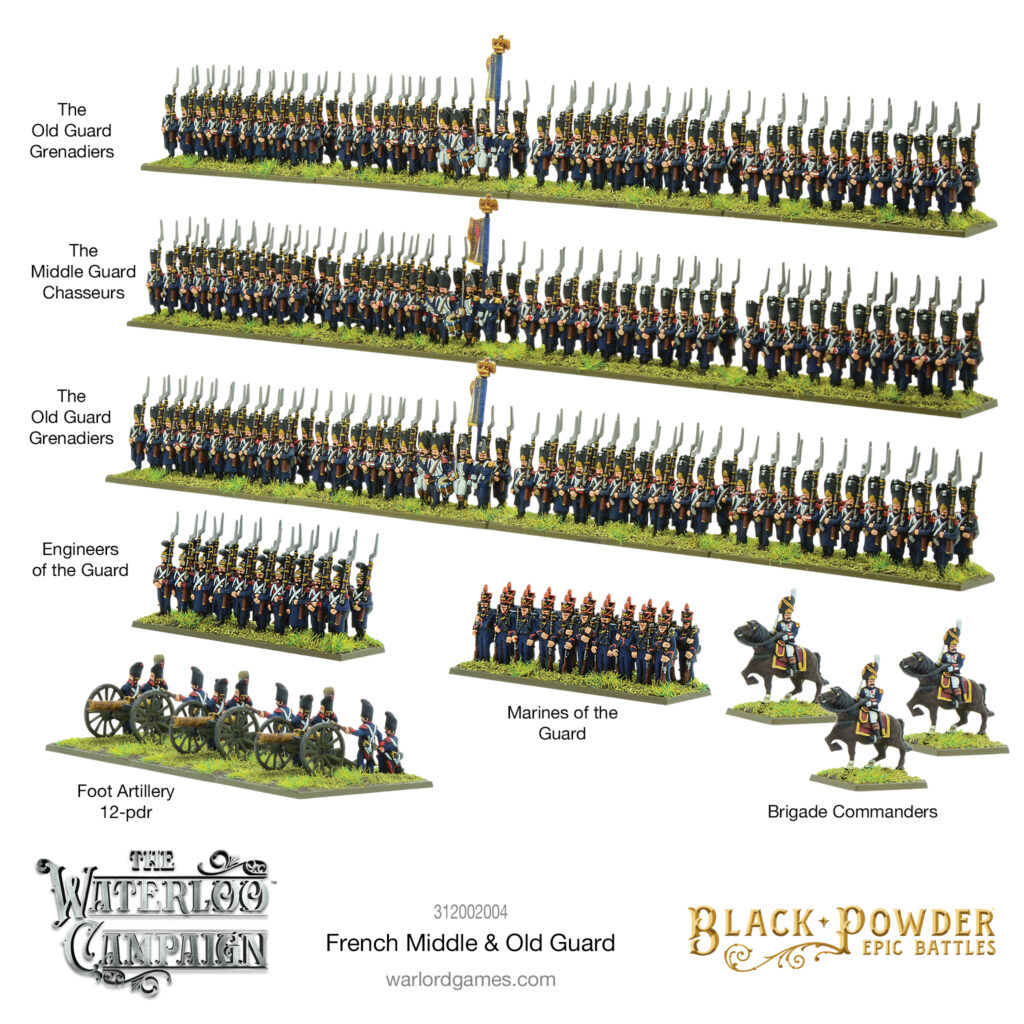
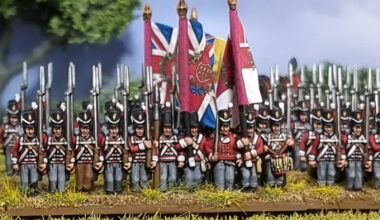
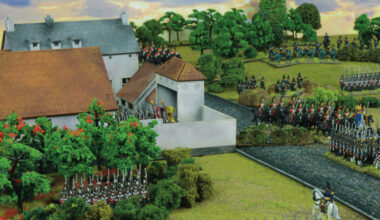
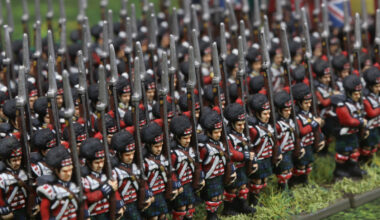
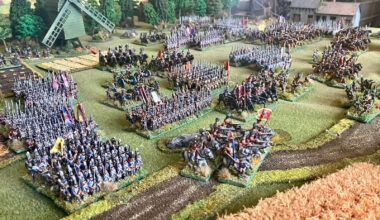
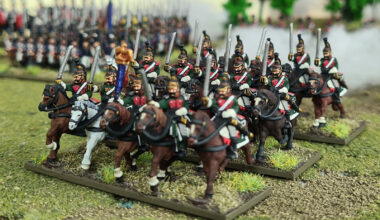
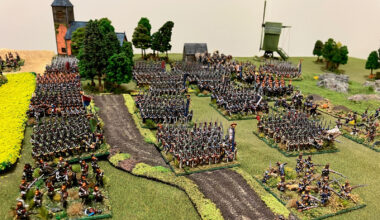
2 comments
I believe that the foot chasseurs were part of the old guard and that the middle guard were made up of Fusiliers- Chasseuirs’ and ‘Fusiliers-Grenadiers’ which wore shakos.
Thank you Dan, very interesting and most helpful, thanks for taking the time to do this.
Comments are closed.